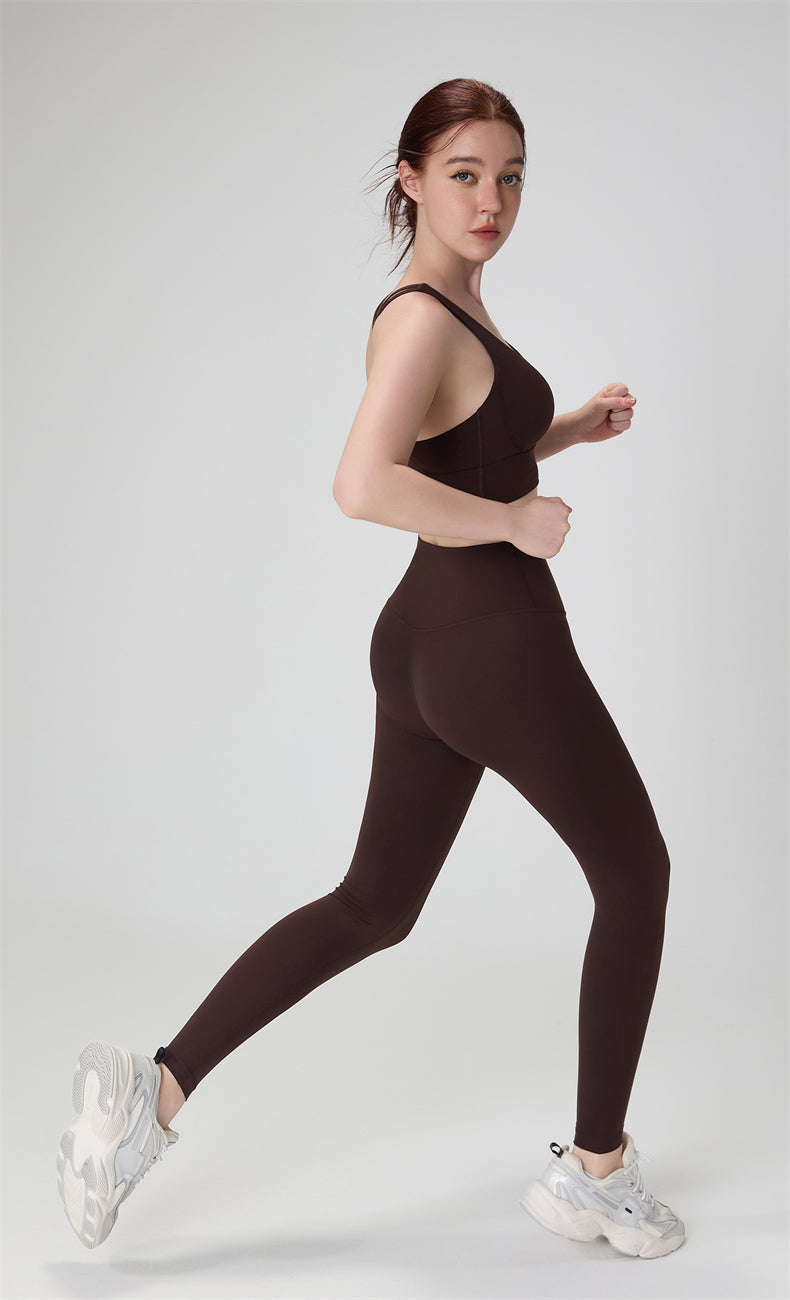The stable usage experience of yoga sports vests

Stability Experience of Yoga Sports Bras: Key Factors That Impact Performance During Practice
The stability of a yoga sports bra is essential for maintaining comfort and focus during dynamic movements. Unlike high-impact activities, yoga requires a balance of support and flexibility, allowing the bra to stay in place without restricting range of motion. Below are critical aspects that influence stability and how they affect the overall user experience.
Underband and Strap Design: Foundations of Secure Fit
The underband serves as the anchor for a yoga sports bra, providing the primary source of support. A well-designed underband should sit snugly around the ribcage without digging into the skin or riding up during movement. When testing stability, perform forward folds, twists, and inversions to observe how the underband responds. If it shifts or feels loose, the bra may lack the necessary elasticity or grip to stay secure, leading to discomfort or reduced support over time.
Straps play an equally important role in maintaining stability. Adjustable straps allow for a customized fit, ensuring they remain in place without slipping off the shoulders or creating pressure points. During practice, movements like arm circles or extended side angles can reveal whether the straps stay aligned or shift during motion. A racerback or crisscross design enhances stability by distributing weight evenly across the back, reducing the risk of straps sliding or causing irritation.
Fabric Elasticity and Recovery: Preventing Sagging and Bunching
The elasticity of the fabric directly impacts how well a yoga sports bra maintains its shape during repeated stretching and movement. High-quality materials with a blend of spandex or elastane provide the necessary stretch to accommodate poses like downward dog or cobra while returning to their original form afterward. When testing, wear the bra through multiple yoga sessions and observe whether it sags or bunches in areas like the underarms or back.
Fabric recovery is equally important for long-term stability. A bra that loses its elasticity quickly will struggle to stay in place, requiring frequent adjustments during practice. Look for materials with reinforced stitching or a higher percentage of stretch fibers, as these tend to hold their shape better over time. Additionally, moisture-wicking properties help manage sweat, preventing the fabric from becoming heavy or clingy, which can compromise stability during intense sessions.
Encapsulation vs. Compression: Tailoring Support to Movement Type
The way a yoga sports bra provides support—whether through encapsulation or compression—affects its stability during different types of movement. Encapsulation-style bras feature individual cups for each breast, offering targeted support that minimizes bounce and keeps the breasts secure during transitions between poses. This design is particularly effective for poses that involve jumping or quick changes in direction, as it prevents shifting or discomfort.
Compression bras, on the other hand, distribute support evenly across the chest by pressing the breasts against the body. While this style works well for low-impact yoga styles like Hatha or Yin, it may feel restrictive during more dynamic practices like Vinyasa or Power Yoga. When testing stability, consider the intensity of your routine and choose a bra that aligns with your movement needs. A hybrid design that combines encapsulation and compression can offer versatility for practitioners who enjoy a mix of styles.
Impact of Seam Construction on Chafe-Free Stability
Seam construction is often overlooked but plays a significant role in maintaining stability and preventing chafing. Flatlock or bonded seams lie flat against the skin, reducing friction and irritation during movement. When trying on a yoga sports bra, pay attention to how the seams feel along the underarms, shoulders, and back. If they rub or dig into the skin, the bra may cause discomfort during extended practice sessions, undermining its stability.
Seamless designs eliminate stitching altogether, creating a smooth, irritation-free surface that moves with the body. This style is ideal for those with sensitive skin or those who practice hot yoga, as it minimizes the risk of chafing caused by sweat and friction. During testing, wear the bra for a full session and note any areas where the seams create pressure points or discomfort, as these can distract from your practice and reduce overall stability.
By evaluating underband and strap design, fabric elasticity, support style, and seam construction, practitioners can identify a yoga sports bra that offers reliable stability without sacrificing comfort or flexibility. Each factor contributes to a seamless experience, allowing you to move confidently through every pose and transition.



Leave a comment
All comments are moderated before being published.